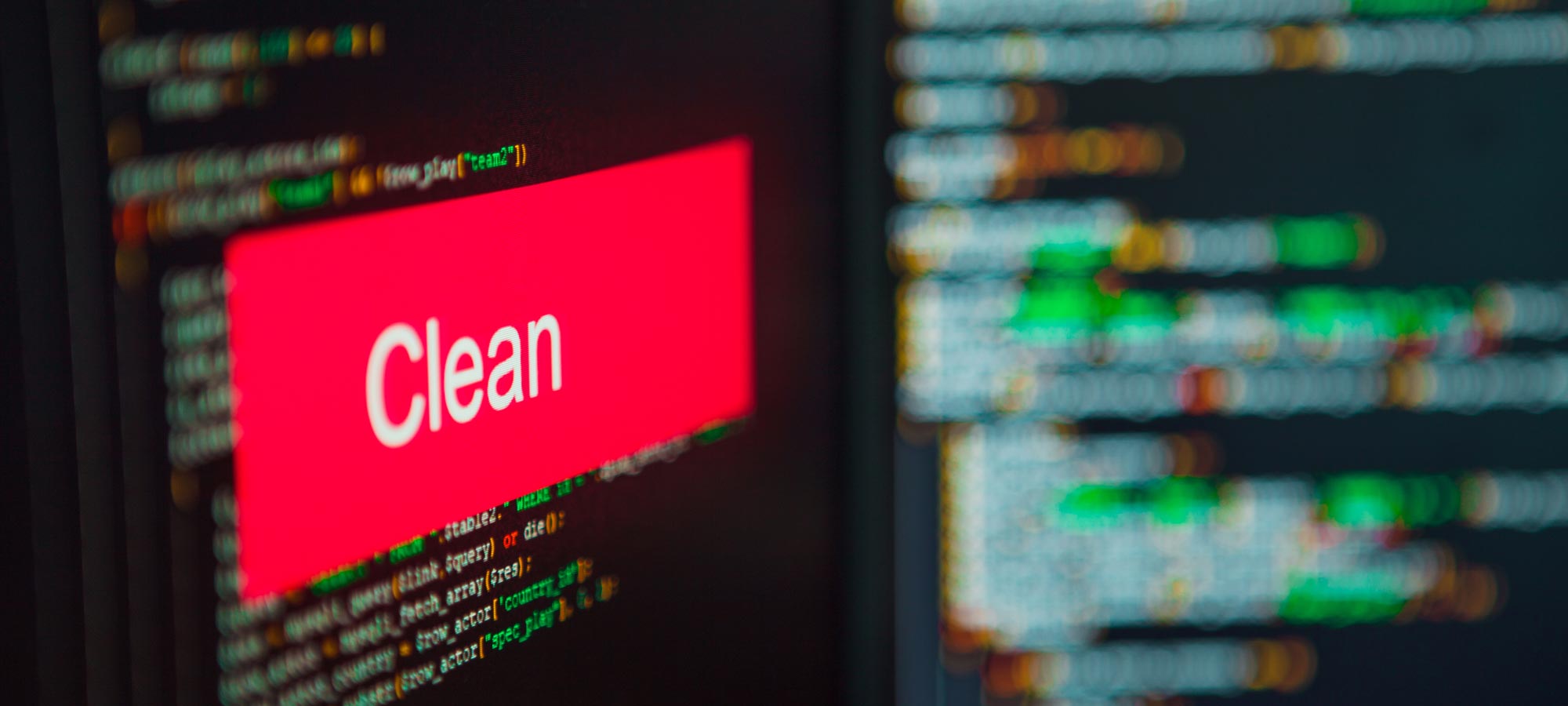
Seriously? Bad source code! Again?! This question comes up again and again. Reason enough to think about how Clean Code and business value are connected: Do developers who improve code quality do a better job than developers who leave bad code behind?
My personal observation
When I dig into new projects for the first time, I always find code smells like classes with more than 500 lines of code, duplicated logic, untested features, logic deeply baked in into an UI component that easily could have been a pure lovely testable function. Is clean code like complex rocket science, mastered by only a few? Or is clean code just not important? Let’s reflect about that.
What should good source code do?
When we consider something as bad, it doesn’t meet our expectations. When I work with bad source code, my expectation to rapidly implement new features gets disappointed. This makes me feel the company is not earning as much money as it could, due to previous sloppy work.
This leads me directly to the point, what good source code in the free market should do: Its purpose is simply to earn as much money as possible.
How does our source code earn money? Mostly some company sells a product. The source code is like a lot of other important stuff part of the product. In the end customers and stakeholder have hopefully given more money, than was spent on salaries, licenses, marketing, etc., so some money stays in the company.
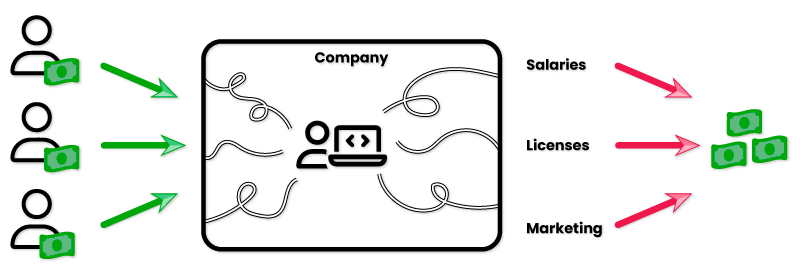
But wait, so far there wasn’t anything about clean code in this section. Is this stuff just not important?
Some thought experiments
Let’s have three simple thought experiments. In the following diagrams the numbers represent an abstract unit of earned money per release. The exact amount is not relevant but only their ratio.
1. Product development with one release
Assume we ship a new product. The first team does rapid prototyping and produces a lot of features with sh*ty code. The second team spends time for building a clean codebase but doesn’t ship as many features due to it. Customers pay for the product and not for the internal source code. Meaning the company will likely earn more with the first team.
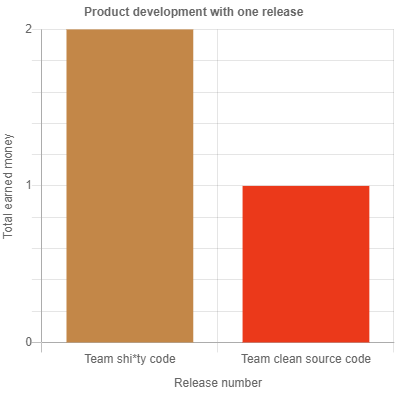
2. Product development with five releases
But our product hopefully lives longer than one release. The second team can likely release new features on a regular basis. Thus increasing customers base and existing customers are willing to pay more. Both increases revenue steadily. But the first team must fix some bugs. New features take longer time. So, they aren’t able to ship as many new features. Their gain doesn’t increase as steadily.
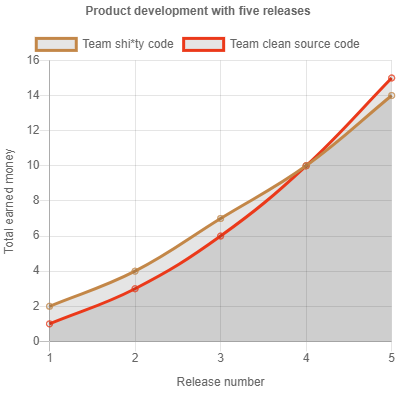
3. Product development with competition taking market share
Naturally we decide to be the second team. But after our first release a similar product appears on the market. We start to lose customers and we hardly make any profit anymore.
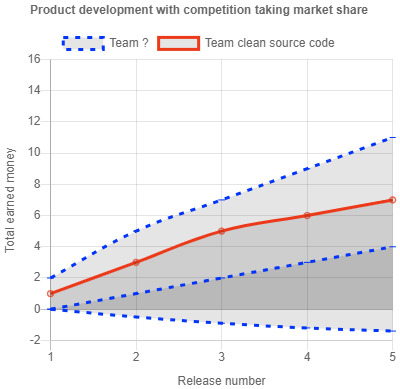
Why could the competitor take away market share from us?
- Did he write cleaner code, allowing him to implement more features than us?
- Did he cut short on clean code for having more times for features? In that case he will probably have to fix a lot of bugs and will need ages for new features in the near future. Not unlikely, frustrated developers will start quitting. Nevertheless, for now he takes away some of our customers and it is unclear, if those will come back later.
- Or maybe he just paid a bigger team taking away our customers but losing money for now.
- Or maybe he implemented less features. But he did better market research and his features hit the market better.
- Or maybe he did better marketing for a worse product.
- Or maybe …
Some general thoughts
So how should we react to the third scenario? There is no simple answer. We can invest in many different building blocks and it’s often hard to say what the exact outcome of which investment will be. Unfortunately, we haven’t enough time to invest into everything. E.g.:
We could improve code quality, reducing average feature cycle time from two to one week. That would increase future productivity by about 50%.
Or we could introduce some user data evaluation. If the insights from that enables us to make every second instead of every fourth feature hit, we have increased productivity by about 50% as well. It also helps code quality, as we have fewer features to maintain.
Moral of this reflection
The existing bad source code may have been a reasonable trade off by a smart team. A successful product depends on a lot of things. Clean code is one important building block, but there are many levers a developer can pull. It is an important part of a developer’s job to decide how much of their limited time goes into clean code and how much into other important stuff like new features, refinements, trainings of colleagues, etc.

